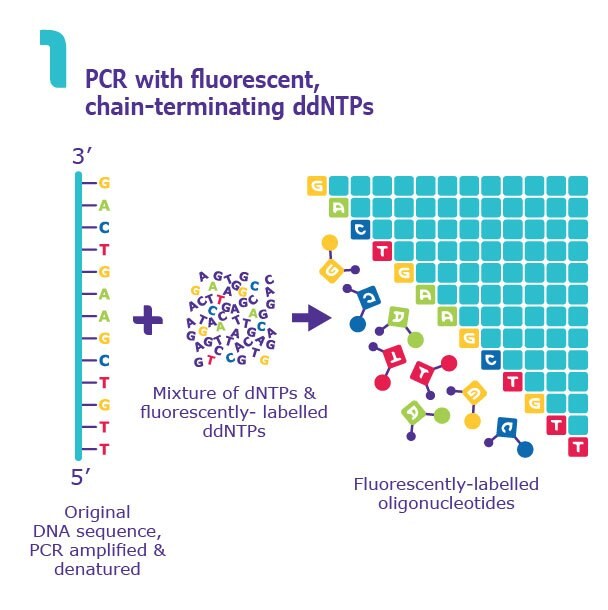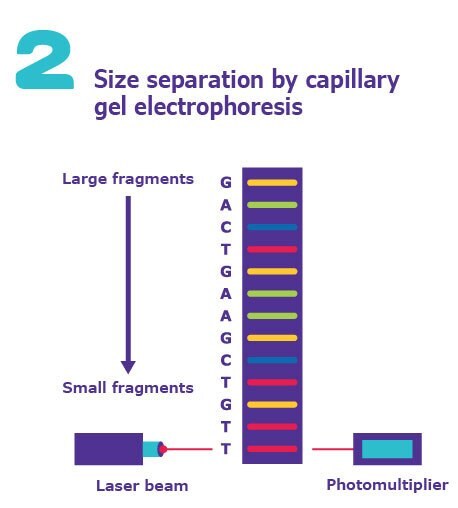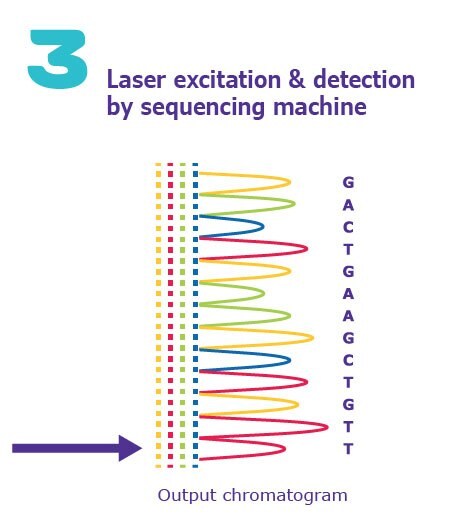Sequencing
The ability to determine the composition and order of nucleic acids in a strand of DNA or RNA has profound implications for understanding modern genetics and numerous fields that are essential for disease research and a better understanding of all organisms. The ability to sequence nucleic acids is not only useful for deciphering an organism’s genetic code but also provides researchers with a powerful tool, in combination with additional molecular technologies, to easily manipulate DNA sequences and verify those changes through sequencing. As coding DNA functions as the coded information for proteins, researchers can now custom design recombinant proteins that contain a large variety of functional elements and are widely used to answer an equally large number of important research questions. For additional whole-genome sequencing reagents and guides, please visit Next-Generation Sequencing resource.
Sanger Sequencing
Early on, analytical chemistry methods were able to determine nucleic acid composition. However, Fred Sanger and colleagues developed methods - initially using radiolabeled digested fragments and two-dimensional fractionation - to provide some of the first complete nucleic sequences. Advancements in the field continued for several decades, with each improvement adding to a growing library of sequenced proteins and genomes. These improvements include the separation of nucleotides by length using gel electrophoresis followed by capillary electrophoresis. Additionally, the incorporation of fluorescently-labeled nucleotides and automated computer analysis of each nucleic acid fragment all now define the modern Sanger sequencing method.
DNA Sequencing Methodology
While the methods to sequence DNA have continued to improve since the origin of this technology, several fundamental components are still necessary and used by modern DNA sequencing platforms. DNA preparation typically includes isolation and purification of the DNA from the host organism. Additional critical components, including free DNA bases, DNA primers, modified DNA bases containing fluorescent tags (terminator bases), and DNA polymerase are added together into a single vessel. The vessel containing all these components through a series of heating and cooling steps will produce a library of small DNA sequences relative to the full-length DNA sequence of interest, each ending with a fluorescently end-labeled terminator base. The new DNA strands containing the fluorescently end-labeled nucleotides are separated by length, passed through a capillary tube, and arranged by size. A laser is then used to excite the fluorescent base on each strand while a camera captures the signal. Lastly, a computer is typically used to assemble the collected information into the full-length DNA sequence.
Related Technical Articles
- After you have performed a CRISPR experiment it is important to determine which gRNAs performed successfully editing. There are many ways to validate CRISPR gene editing experiments. A quick and easy way to check for cutting is by using the Sigma-Aldrich® T7E1 mismatch detection kit.
- An ultrafiltration cartridge can be placed at the outlet of a water purification system to deliver nuclease-free ultrapure water.
- Expression of the Multiple Sclerosis-Associated MHC Class II Allele HLA-DRB1*1501 Is Regulated by Vitamin D
- Next-generation sequencing (NGS) revolutionized genomic research, and is now playing a crucial role in the clinical environment.
- Amino Acid Codon Wheel for fast RNA translation. Find which amino acid is translated from your RNA sequence quickly and easily.
- See All
Related Protocols
- Learn about Sanger Sequencing steps or the chain termination method and how DNA sequencing works and how to read Sanger Sequencing results accurately for your research.
- See All
To continue reading please sign in or create an account.
Don't Have An Account?

